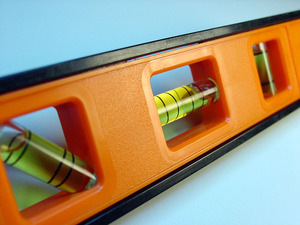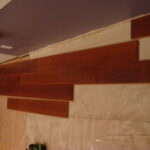Before installing a new floor, you’ll want to consider replacing or adding underlayment. I can tell you from personal experience that having the proper underlayment does make a difference in terms of evenness and energy efficiency. During one of my family’s home improvement projects, we were faced with a room that had nothing but a sub-floor. It was part of a house that sat on blocks, so there was a lot of energy loss and some warping in spots. Therefore, we decided to repair the sub-floor, install underlayment and then install a laminate floor. It wasn’t that hard to install the underlayment. Here’s how to do it:
Underlayment Supplies Needed
Because we were working with nothing more than a sub-floor, we covered the sub-floor first with a layer of building paper in order to reduce energy loss and moisture related issues. For underlayment, we purchased ¼ inch thick plywood and then capped it off with a moisture vapor barrier before adding the final layer of laminate. Some folks may not need to go through all that trouble. We also used flooring nails, a hammer, a ruler, a level, a circular saw and a jig saw.
Before Installing the Underlayment
One crucial thing to do before attempting to install underlayment is to leave the plywood or other underlayment material that you’ll be using in your home for a few days. This helps the underlayment material to acclimate to your home’s temperatures and humidity levels. You’ll also need to remove any base molding from the room that you’ll be working in.
Installing the Underlayment
Starting from the center of the room, lay down one piece of plywood. Secure the plywood panel to the sub-floor by driving flooring nails across the plywood’s face at roughly 4 inch intervals. Then continue by placing a plywood panel next to the one you just nailed into position it in a way that does not allow the corners of the two panels to line up. Proceed in that manner and work your way outward from the center of the room. Once you reach the room’s edges, measure and cut plywood pieces to fill in the gaps between the wall and the last full plywood panel. Don’t be too concerned if there is a slight gap between the final piece of plywood and the wall as the baseboard should ultimately cover it. After the underlayment is in place, you may continue by adding your top layers of flooring. For my family’s home improvement project, we continued by adding a vapor barrier and laminate flooring. What final flooring you use is of course up to you.
Killeen Gonzalez enjoys completing home improvement projects with her family.
More from this contributor:
How to Repair a Vertical Crack in a Brick Chimney Wall
How to Repair a Basement’s Moisture Problems
How to Repair Moderate Drywall Damage
How to Repair Damaged Stucco Walls





